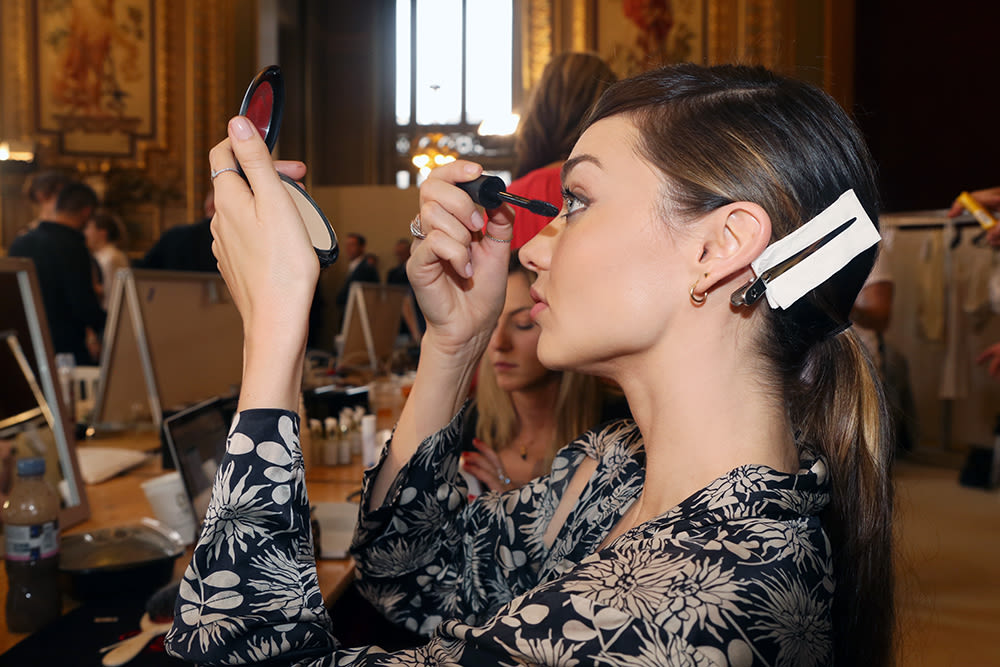We're all a little eye-makeup obsessed around here, right? So imagine our delight when we got an email from Cindy Lin, an ITG reader who also happens to develop mascara wands and other beauty products at Albéa for a living. After reading our Wands 101 post, Cindy alerted us to the fact that we'd really just scratched the surface of the brush/bottle discussion, so we asked her to put her expertise in an article. Here, Cindy tells us (and you) everything we ever wanted to know about mascara (but didn't know we...didn't know), and reveals the methods behind the madness:
Creating a breakthrough mascara isn't easy; you can’t just marry any old brush and formula. Mascara development can take years. It’s really the perfect storm of three things working in synergy: the brush, the wiper, and the formula. Here's a rundown on what each of those pieces really does:
Formula:
People always ask, “Why is it about the newfangled brush, the innovative applicator? Why not the formula? Where’s the breakthrough technology?” Well, the truth is that mascara formulas have changed very little in the past 50 years. It's basically wax, pigments, and film formers. The most recent innovation was the 2004 FDA approval of carbon-black pigment, which gives you the darkest, blackest lashes possible. Now everyone's using it. Aside from that, the chemical companies aren't innovating new ingredients for mascara use. Who's going to spend the money to get it clinically tested and FDA approved? Let's not even think about potential lawsuits on an untested polymer, etc. All this costs a lot of resources and time. So it's actually easier and cheaper to create a breakthrough brush than a breakthrough formula. In fact, many brands “share' a formula, but the effects can be drastically different due to the brush, wiper, and bottle. MAC’s Haute & Naughty is a perfect example of this. It's one formula and one brush, but you get two different lash effects with a simple switch of the wiper and stem.
When it comes to formula claims, if you see “contains vitamin this, vitamin that,” argan oil, botanical extracts, etc., it's usually just promotional and at low percentages—the bulk of the formula is still the basic wax-pigment combo. A “wow” effect mascara is not attributable to the 0.001 percent of diamond dust in the formula, but again, the synergy of the brush, formula, and wiper all working together. “Ophthalmologist-approved' is an easy claim to make as well. You just hire one doctor to look at the formula, check to make sure there's no bad stuff, and sign their name attesting that they 'approve' it. If you have an ophthalmologist in the family, getting it cleared might only cost you dinner and a smile!
Brush:
Traditional mascara brushes are known as either fiber brushes or twisted wire brushes. Nylon fibers are twisted around a wire, then given a quick haircut to get the desired shape—conical, waved, tapered, etc. The exact number and type of nylon fibers, along with the specific way they're twisted and trimmed, are usually trade secrets. Brands spend large amounts of money to patent a brush, with lawyers who literally count individual hairs on potential patent-infringers’ brushes to make sure no one touches their billion-dollar baby.
Plastic-molded brushes have become more popular recently because they allow for greater design control. For instance, you can create larger grooves that act as 'reservoir zones' for holding extra formula (i.e., mascara). The more finely spaced the bristles, the more separating/defining the result; Lancôme Définicils is the classic example of this brush type. If they’re further apart—think Maybelline Volum' Express The Colossal Mascara—you get more thickening and volumizing. You can also mold crazy designs and colors that express the brand’s image, like the topiary look of the Rimmel Sexy Curves brush.
After a brush is developed, it goes to our testing facility, where experts test it with different variables such as formulas, wipers, and packaging. Imagine someone applying mascara to rows and rows of lashes, measuring the results with fine calipers and instruments, calculating data that measure load (deposit), thickening, separating, and curling. This is done over and over, in different combinations, until the client’s desired results are maxed out (i.e. super volume or extreme length). The end result is a spider web-looking chart, which shows you the final evaluation. We also test with panels of real women to see brushes’ effect on different peoples' lashes.
Wiper:
The wiper is the plastic ring inside the mascara tube's mouth. It's absolutely crucial to the mascara's performance because it determines how much excess formula is wiped off versus how much is retained on the brush and therefore deposited onto your lash. If the wiper is too tight, all the formula gets squeezed off the brush. But too large a wiper and you get a goopy mess along with clumpy, slow-drying lashes—smudge city. You can invest tons of money in a beautiful, shiny bottle, technological brush, and amazing formula, but if you have a wiper that's too tight or too large, the effect can be disastrous. One millimeter can make a huge difference.
If you want to see how wiper size can dramatically change application, look at all the adjustable mascaras. Products like LashControl work by allowing you to modify the width of the wiper. Since payoff is directly related to how much product is left on the brush, ratcheting the wiper down gives you more definition, while opening it up makes for a high-impact look.
—Cindy Lin
Cindy lives in NYC and is Albéa's Director of Product Development, Beauty Solutions. Photographed by Emily Weiss.

